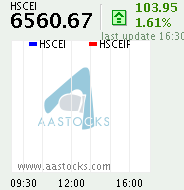The BRIC thesis --- The Four Major Emerging Economies
BRIC is a term used to refer to the combination of Brazil, Russia, India, and China.
General consensus is that the term was first prominently used in a thesis of the Goldman Sachs investment bank. The main point of this 2003 paper was to argue that the economies of the BRICs are rapidly developing and by the year 2050 will overtake most of the current richest countries of the world.
[Due to the popularity of the Goldman Sachs thesis "BRIC" is also extended to "BRICS" (S for South Africa) and "BRICET" (including Eastern Europe and Turkey) have become more generic marketing terms to refer to these emerging markets.]
Goldman Sachs argues that the economic potential of Brazil, Russia, India, and China is such that they may become among the four most dominant economies by the year 2050. These countries are forecast to encompass over 40% of the world's population and hold a combined GDP of 14.951 trillion US dollars. On almost every scale, they would be the largest entity on the global stage.
The BRIC thesis recognises that Brazil, Russia, India and China have changed their political systems to embrace global capitalism. Goldman Sachs predicts China and India, respectively, to be the dominant global suppliers of manufactured goods and services while Brazil and Russia would become similarly dominant as suppliers of raw materials. Brazil is dominant in soy and iron ore while Russia has enormous supplies of oil and natural gas.
The BRICs have the potential to form a powerful economic bloc. Cooperation is thus likely to be a next step among the BRICs as Brazil and Russia together form the commodity suppliers to India and China.
The BRIC governments all initiated economic or political reforms to allow their countries to enter the world economy in the last late century. In order to compete, they all have stressed their education, foreign investment, domestic consumption, and domestic entrepreneurship.
According to the study, India has the potential to grow the fastest among the four BRIC countries over the next 30 to 50 years. A major reason for this is that the decline in working age population will happen later for India and Brazil than for Russia and China.
The Goldman Sachs global economics team released a follow-up report to its initial BRIC study in 2004. In this report it is estimated that the BRIC economies' share of world growth could rise from 20% in 2003 to more than 40% in 2025. Furthermore, between 2005 and 2015 over 800 million people in these countries will have crossed the annual income threshold of US$3,000.
In 2025, it is calculated that approximately 200 million people in these economies will have annual incomes above US$15,000. Therefore, the huge increase in demand will not be restricted to basic goods but also impact higher-priced branded goods.
According to the report, first China and then a decade later India will overtake the US as the world's largest car market.
tcwong at http://wongtc.blogspot.com/
General consensus is that the term was first prominently used in a thesis of the Goldman Sachs investment bank. The main point of this 2003 paper was to argue that the economies of the BRICs are rapidly developing and by the year 2050 will overtake most of the current richest countries of the world.
[Due to the popularity of the Goldman Sachs thesis "BRIC" is also extended to "BRICS" (S for South Africa) and "BRICET" (including Eastern Europe and Turkey) have become more generic marketing terms to refer to these emerging markets.]
Goldman Sachs argues that the economic potential of Brazil, Russia, India, and China is such that they may become among the four most dominant economies by the year 2050. These countries are forecast to encompass over 40% of the world's population and hold a combined GDP of 14.951 trillion US dollars. On almost every scale, they would be the largest entity on the global stage.
The BRIC thesis recognises that Brazil, Russia, India and China have changed their political systems to embrace global capitalism. Goldman Sachs predicts China and India, respectively, to be the dominant global suppliers of manufactured goods and services while Brazil and Russia would become similarly dominant as suppliers of raw materials. Brazil is dominant in soy and iron ore while Russia has enormous supplies of oil and natural gas.
The BRICs have the potential to form a powerful economic bloc. Cooperation is thus likely to be a next step among the BRICs as Brazil and Russia together form the commodity suppliers to India and China.
The BRIC governments all initiated economic or political reforms to allow their countries to enter the world economy in the last late century. In order to compete, they all have stressed their education, foreign investment, domestic consumption, and domestic entrepreneurship.
According to the study, India has the potential to grow the fastest among the four BRIC countries over the next 30 to 50 years. A major reason for this is that the decline in working age population will happen later for India and Brazil than for Russia and China.
The Goldman Sachs global economics team released a follow-up report to its initial BRIC study in 2004. In this report it is estimated that the BRIC economies' share of world growth could rise from 20% in 2003 to more than 40% in 2025. Furthermore, between 2005 and 2015 over 800 million people in these countries will have crossed the annual income threshold of US$3,000.
In 2025, it is calculated that approximately 200 million people in these economies will have annual incomes above US$15,000. Therefore, the huge increase in demand will not be restricted to basic goods but also impact higher-priced branded goods.
According to the report, first China and then a decade later India will overtake the US as the world's largest car market.
tcwong at http://wongtc.blogspot.com/











0 Comments:
發佈留言
<< Home